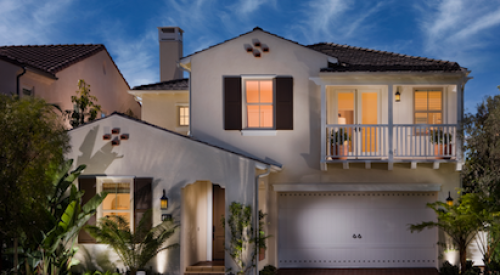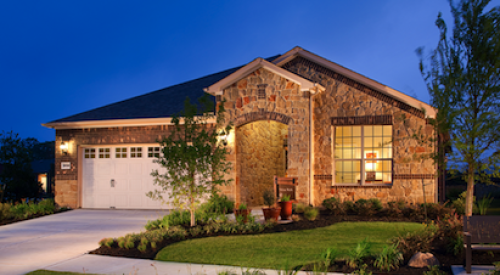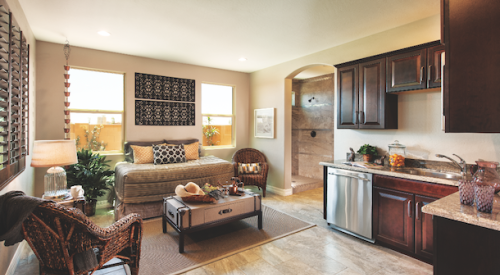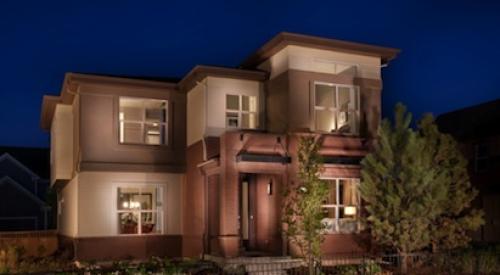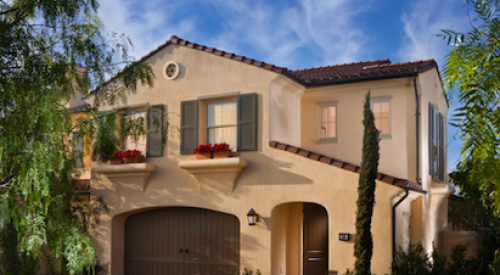| Survey Results |
| What is your primary motivation for buying another home? |
| Top Five Factors Influencing Home Selection |
| One-Third Will Stay In Same Town |
| New House On Infill Site Tops List |
| About Half Prefer All-Ages Community |
| Must-Have Features In A Planned Community |
| Top Rated Features And Options |
| Universal Design, Upgraded Wiring Are Hot Buttons |
| Most Popular Recreational Activities |
| Investments Expected To Finance Golden Years |
| What's Crucial At Age 65 |
Four million of them turn 50 each year. The oldest will be eligible to live in an age-restricted (55-and-over) community in just three years. They’re educated, computer-literate and physically fit. They’re baby boomers, and the leading edge of the boom--those aged 45 to 54--could be your newest customers.
Various labels have been used to describe these home buyers, such as older empty nesters, movedowns, luxury movedowns and pre-retirees. For the purposes of this article, we’ve chosen to call them aging baby boomers, but we recognize that no label accurately reflects their diverse household configurations, life stages and lifestyles. Not all are empty nesters; some still have children, both young and old, living at home. Some are single (never married, divorced or widowed). Some are planning retirement, while others haven’t given it a thought; in fact, they bristle at the word "aging." And although a certain percentage are affluent, others are best described as middle-class. Exasperating as they are to pin down, they are nonetheless a force that will rock the housing market.
What do they have in common, then? Mainly demographics. Baby boomers were born between 1946 and 1964; therefore, they’re now between 35 and 54 years old, and head 40% of American households, according to the U.S. Census Bureau. By 2000, the number of households headed by the 45-to-54 age group will increase 20%. For the last 24 years, PB has served the industry with a comprehensive consumer survey. This year, the enormous potential of the aging boomer market demanded that we refocus our research. National Family Opinion of Toledo, Ohio conducted the survey on behalf of PB, interviewing 752 people between the ages of 43 and 53.
If aging baby boomers are part of your market, read on. You could acquire valuable information that will help you design, build and sell the right houses to the right people.
One House Doesn’t Fit All
It’s difficult to generalize about aging boomers. No one design fits this market, because the buyers aren’t all alike. But certain features, such as main-floor master bedrooms and flex spaces (lofts, walkout basements, etc.) that can be used as home offices, recreation rooms, guest quarters or play areas for visiting children and grandchildren, are hot buttons.
Thirty-eight percent of the home buyers surveyed for this article said they were moving up to a bigger and/or better home. But 42.3% were either downsizing or purchasing a home for retirement. Although price/affordability was the number one factor influencing home selection, floor plan was second. Those in the 50-53 age group put slightly more emphasis on the floor plan.
One might assume that because their children have left the nest, aging boomers would want to move to a smaller home. But the survey indicates they’re not downsizing to any great degree (sometimes empty nesters end up buying the same size home, if not a larger one). The average square footage given by respondents was 2065. Compare this figure to PB’s 1998 consumer survey, when buyers across the board (first-time, move-up, empty nester and retiree) said their ideal new home would average 2105 square feet.
Unlike move-ups who are pressured by the needs of a growing family, buying another house is not usually an urgent matter for aging boomers. Survey respondents expect to live in their present homes for another four and a half years, on average (close to six years for retirees and nearly five years for empty nesters). These buyers can afford to take their time and research their choices intensively. Traditional avenues such as real estate brokers, newspaper or classified ads and word-of-mouth figure prominently in the home search, but the Internet has gained in importance. About 16% of retirees and 8% of empty nesters said they use builder web sites; 12% of retirees and about 5% of empty nesters use third-party web sites. This isn’t surprising, given that 62.5% of all respondents said computers were the technological advancement that has had the most impact on them personally.
Although only 16.5% of all respondents said they were planning to buy in a different state, 39.4% of retirees were planning an out-of-state move. The top destinations given were Arizona, Florida and North Carolina. About 27% of empty nesters plan to move to a different city or town.
According to the Yankelovich Monitor, empty nesters will occupy more than 19.5 million households over the next five years. These empty nesters are young-thinking and proud of their accomplishments. The Yankelovich study indicates that, compared to 46% of all Americans, 71% of empty nesters believe they have achieved the American dream. But while aging boomers may have money (either earned or inherited), that doesn’t mean they’re savvy about the business world, says Jerry Gloss, principal of Knudson Gloss Architects, Boulder, Colo.
"They’re very decision-challenged and more oriented toward instant gratification, and I think the spec housing market is going to boom because of that," says Gloss. "I’m seeing a lot of resistance to going through the custom home process. They’d rather just buy something off the shelf."
What Gloss calls "gear-back communities" with moderately-priced housing are springing up all over the country because not every aging boomer can afford to move to Arizona or Florida. In fact, economics has more to do with this buyer’s purchase decision than climate or the desire to be close to family. About 24% of survey respondents said economic factors would determine the location of their new home.
A little over a third said their first choice would be a newly-built house in an established neighborhood (i.e. infill site). Only 3.4% put "age-restricted community" at the top of their list. The older the buyer, the more likely they were to prefer a master-planned or age-restricted community (see chart).
A little over half of all respondents said they would rather live in a community that is open to all ages. Those who showed a preference for master-planned community living (11.5% of all respondents) listed swimming pools, security features and hiking trails as the most desirable amenities.
Energy efficiency tops the list of features and options, earning a 4.6 rating on a 1-to-5 scale (5 being extremely important). Fireplaces, home offices, home entertainment systems and bonus rooms also earned a place on the most-wanted list.
Respondents showed a strong preference for universal design features (such as ramps, wider doorways and space for wheelchairs under sinks) and upgraded wiring packages that permit the integration of computer, security, entertainment and other types of systems. "Be sensitive to evolving priorities and life situations created by aging or health problems and family structure transitions," says Gloss. "Wider doorways and raised electrical outlets improve accessibility."
Planning Ahead
If you’re a baby boomer, you probably remember constant admonitions from your parents to save, save, save. But did you take their advice and start saving early for retirement, or did you procrastinate? Respondents to the PB survey seem to be in the first group. About 84% have started saving for retirement, and 61.5% invest in the stock market. Nearly half expected investments to be their primary source of financial support after retirement. Pensions ranked second (31.5%) and social security income was a distant third (15%). Another 7% mentioned work as a source of retirement income.
The average age at which they expect to retire is 59. However, 30.4% didn’t know when they would retire and 4.8% said they would never be able to retire. The majority (nearly 75%) expect to work either full-time or part-time after retiring from their primary careers, and 64.1% will work outside of their homes. But 43.6% of the younger respondents (aged 43 to 45) intend to work at home after retirement. After aging boomers turn 65, they say health care will be the most important service. Computer-related services ranked second. Retirement housing developers wound up at the bottom of the list.
Bill Darling of McKinney, Texas-based giant Darling Homes says about 40% of his sales are to well-heeled aging boomers. Darling recently entered the Houston market with a new project called the Enclave on the Cove, which is part of The Woodlands master plan. Darling’s model, which was scheduled to open at the end of April, has 2853 square feet of living space on one level. The courtyard plan includes a kitchen with a large serving island and a sunroom that shares a fireplace with the family room. There is also a covered patio, private study, formal dining room, three-car split garage and attic storage. At press time, Darling had presold eight homes at the Enclave, ranging from 2494 to 3292 square feet and priced from $298,990 to $358,990. For ease of maintenance, the Old World-style exteriors are a combination of brick and stone or stucco and stone.
Darling predicts that the rapid growth of the 45-to-55 age group will fuel sales of this type of luxurious, maintenance-free housing. "Communities that are closer to the city appeal to aging baby boomers, whereas the master plans that are farther out tend to attract retirees," he says.
Even Del Webb Corp., renowned for its active adult (55 and over) communities, wisely recognizes that there is a huge market for pre-retirees--the very market discussed here. Del Webb opened Anthem, an all-ages master plan, in March 1999. Located north of Phoenix, the project consists of two communities in phase one: Anthem Parkside, a family-oriented neighborhood, and Anthem Country Club, a gated community with an 18-hole championship golf course. In the first two weeks after the grand opening, the builder sold 361 houses.
Anthem Country Club targets empty nesters, age 45 to 65, with a full amenity package. In addition to the golf course, there are tennis courts, a swimming pool and spa and a fitness and aerobics center. When completed, there will be 1450 single-family homes ranging from 1340 to 3700 square feet and priced from the $130,000s to the mid-$300,000s. Some plans offer an optional cabana or casita.
Jacque Pappas, who is in charge of public relations for Anthem, says 155 homes have been sold at the Country Club to date.
"We’re finding that in many households, even though one or more members may be age-qualified for a 55-and-over community, they’ve decided they don’t want to live in one," says Pappas. "Anthem is their housing solution for the long term." She says the larger two-bedroom homes play to that demographic. The cabana option is popular because of the number of people who work at home."
The community has been successful, Pappas says, "because it has what people are looking for. It’s outside the city, but not too far away. The floor plans mirror their lifestyles--designed for entertaining, they also have space for a home office and reading nook."
What Motivates Boomers
Since the peak year for boomer births was 1957, most are still in their 30s and early 40s and haven’t yet reached their maximum earning and spending potential, says Gloss. Down the line, inheritance and accumulated wealth and tax breaks will encourage them to buy vacation and retirement properties. The most popular retirement states--Arizona, Florida and California--won’t be able to keep up with retirement migration, leading to the development of communities in other parts of the Sunbelt and even south of the border, Gloss says.
Having put their careers before family, boomers delayed having children until later in life, and often find themselves now caring for aging parents as well as young children and college-age children who return to the nest while trying to start their own careers. To target this market most effectively, says Gloss, builders and developers should keep in mind that boomers need to be close to services, schools and offices. Community amenities are important, including recreation and security.
Leslie Savitch, president of Target Group Marketing, Portland, Ore., helped local builder Randy Sebastian develop and position Woodbridge Custom Homes, a product line designed specifically for aging baby boomers. The Woodbridge homes all have main-floor master suites, upstairs guest bedrooms, large dining rooms for family gatherings and entertaining, and a den that can be used as a home office (upgraded wiring is standard). Savitch says that at first, the builder was "chided by lenders, title companies, Realtors and developers who said houses with main-floor masters wouldn’t sell. But Randy proved them wrong." Sebastian introduced the new designs in February 1999 and in less than two months, had sold 22 houses at an average price of $300,000 (see sidebar).
Buyers fit the profile Sebastian identified through focus groups and Realtor research: baby boomers in their late 40s and early 50s whose children are grown and out of the house. Both spouses are employed and in 10% to 20% of cases, one spouse works at home.
"They’re career-oriented, but they know the day is coming when they’ll have more time to themselves," he says. "They’ve sold their big family houses and want a smaller home that’s easy to care for. And they have money to spend on options and upgrades." About 30% of Woodbridge buyers are the same people who previously bought large custom homes from him. A small percentage are young professionals, but movedowns are the true market.
Also See:
Trademarked Product Targets Boomers
Rural Setting Charms South Siders
Charity Event Leads to Home Purchase
Luxury Without the Upkeep
Moving Down in Connecticut
Boomers Aging, But Not Retiring--Yet
Golfers Find Their Paradise
